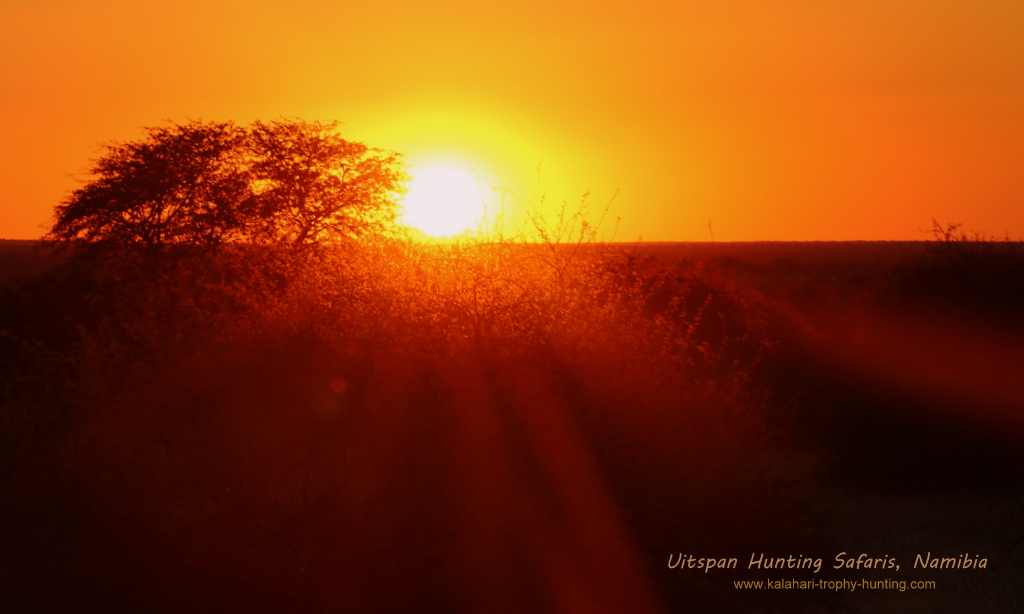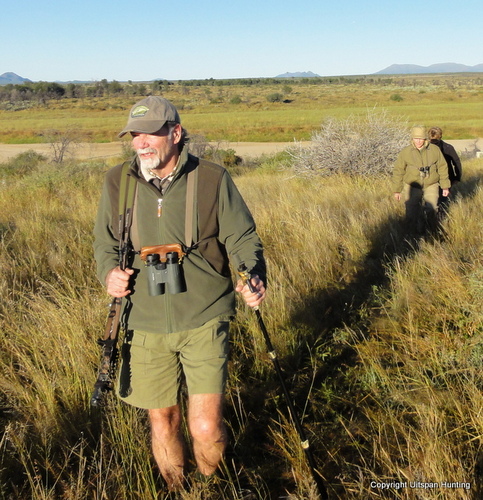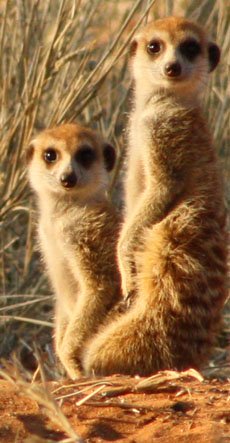For more information about our hunting safaris, don’t hesitate to reach out and contact us!
Hunting Articles and Reviews
There are so many wonderful hunting articles about the Kalahari, Namibia, Africa and safaris.
We ought to remember that
"... writing is not a performance but a generosity"
(Brenda Ueland,1938).
I thought to share special hunting articles here with you so that you will know where to find good reading material that will interest you - all on a few pages!
To make sure you do not miss future additions, subscribe to our Kalahari Blog.
African Hunting Stories
Have you noticed our
"African Hunting Story"-page?
Read about more experiences in Africa...
Links to Hunting Articles
1. Africa Hunt Review by John Palffy, Australia
2. You Only Go Around Once... by Roger Libby
3. Five Calibers for International Hunting by Steve Hofmann
4. Africa Hunting for Women by Terri McIntosh
5. Guns and Ammo For Your Next Trip by Terry Blauwkamp
6. African Safari Costs... what to keep in mind by Terry Blauwkamp
7. What to Say to a Person Who Has Never Hunted by Randall Eaton
8. Namibia Travel-and-Hunt Review by Nancy Morris
9. Trophy hunting buoyant industry for Namibia
10. Hunting...definition and history
11. First Hunt in Africa by Tienie Duvenhage
12. A brown hyena hunting-experience in the Kalahari by Jim Jones
14. Why Africa? by John MacDonald
Meaning of "Uitspan"
'Uitspan' is an Afrikaans word that means place of rest.
When the Boer settlers moved inland in Southern Africa in the 1800's, they used ox carts. When they found a spot with game, water and green grass, they arranged their ox carts into a circular laager for protection against wild animals and stopped for a rest.
They referred to such an action of relaxation for man and beast, as Uitspan.
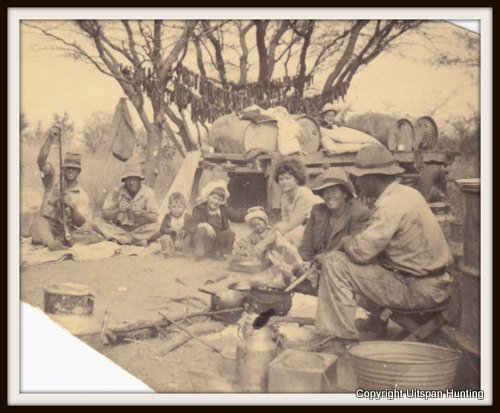
(Picture above of our ancestors.)
Did you know?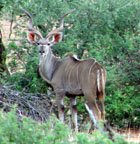 Greater Southern Kudus are famous for their ability to jump high fences. A 2 m (6.56 ft) fence is easily jumped while a 3 m (9.84 ft) high fence is jumped spontaneously. These strong jumpers are known to jump up to 3.5 m (11.48 ft) under stress. |
Did you know? Some animals have one sense more than man!The flehmen response is a particular type of curling of the upper lip in ungulates, felids and many other mammals. This action facilitates the transfer of pheromones and other scents into the vomeronasal organ, also called the Jacobson's Organ. Some animals have one sense more than man!The flehmen response is a particular type of curling of the upper lip in ungulates, felids and many other mammals. This action facilitates the transfer of pheromones and other scents into the vomeronasal organ, also called the Jacobson's Organ.This behavior allows animals to detect scents (for example from urine) of other members of their species or clues to the presence of prey. Flehming allows the animals to determine several factors, including the presence or absence of estrus, the physiological state of the animal, and how long ago the animal passed by. This particular response is recognizable in males when smelling the urine of a females in heat. |
